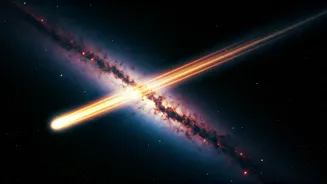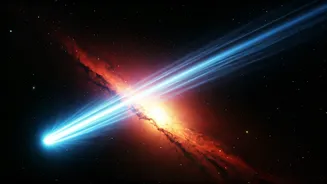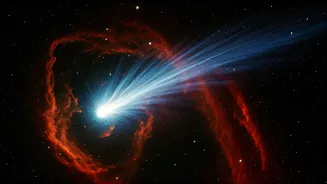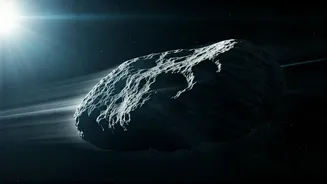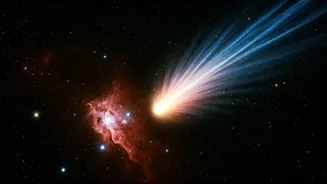Beyond Neptune's Reach
The vast expanse beyond Neptune, the eighth planet from the Sun, is a realm filled with icy debris and mysterious gravitational influences. This region
has spurred speculation about the existence of Planet Nine. The primary clue supporting this hypothesis comes from the peculiar orbits of several icy objects, known as trans-Neptunian objects (TNOs), located far beyond Neptune. These objects, including Sedna and others, have highly elongated orbits that seem to cluster together in a particular way. This orbital alignment has led astronomers to believe there must be a massive, unseen object gravitationally influencing these distant bodies. This planet is theorized to be significantly larger than Earth, possibly a gas giant, and residing in the far reaches of our solar system, making its detection exceptionally challenging.
Clues in Alignment
The anomalous orbits of TNOs serve as the strongest evidence for the presence of Planet Nine. Astronomers have observed that several of these objects share similar orbital characteristics, suggesting a common gravitational influence. This clustering behavior would be highly improbable if these objects were merely scattered randomly across the solar system's outer regions. Furthermore, the inclination of their orbits, the angle at which they are tilted relative to the plane of the solar system, also exhibits a noticeable pattern, further supporting the Planet Nine hypothesis. It is important to acknowledge that some scientists have proposed alternative explanations for this orbital clustering, such as the possibility of undiscovered, smaller objects or gravitational perturbations caused by the combined effects of known objects. However, Planet Nine remains the leading contender for explaining the observed anomalies.
Methods of Detection
Discovering Planet Nine poses a significant challenge, given its presumed distance and faintness. Current methods primarily involve large-scale astronomical surveys that scan the skies for objects that move slowly against the background of stars. These surveys, often using powerful telescopes and advanced imaging techniques, search for subtle variations in the positions of celestial objects over time. Another approach involves carefully analyzing existing astronomical data, including archival images and observations from various telescopes, to identify potential candidates. Astronomers are also using sophisticated computer simulations to model the gravitational effects of a hypothetical planet on the orbits of known objects, refining their search parameters and predicting where Planet Nine might be located. These efforts require immense patience, collaboration, and a deep understanding of celestial mechanics.
Challenges Ahead
The search for Planet Nine presents numerous hurdles. The sheer vastness of space makes the task akin to finding a needle in a cosmic haystack. Its distance from the Sun means it would receive very little sunlight, rendering it faint and difficult to observe directly. Determining the precise location of Planet Nine is also complicated by uncertainties in its orbital parameters, such as its size, mass, and orbital path. Even if the planet is detected, confirming its existence would require further observations and analysis to eliminate the possibility of alternative explanations. Another challenge lies in the sheer volume of data generated by astronomical surveys. Processing and analyzing this data to identify potential candidates requires advanced computational resources and sophisticated algorithms. Despite these difficulties, the ongoing quest for Planet Nine continues to push the boundaries of astronomical knowledge and our understanding of the solar system.


